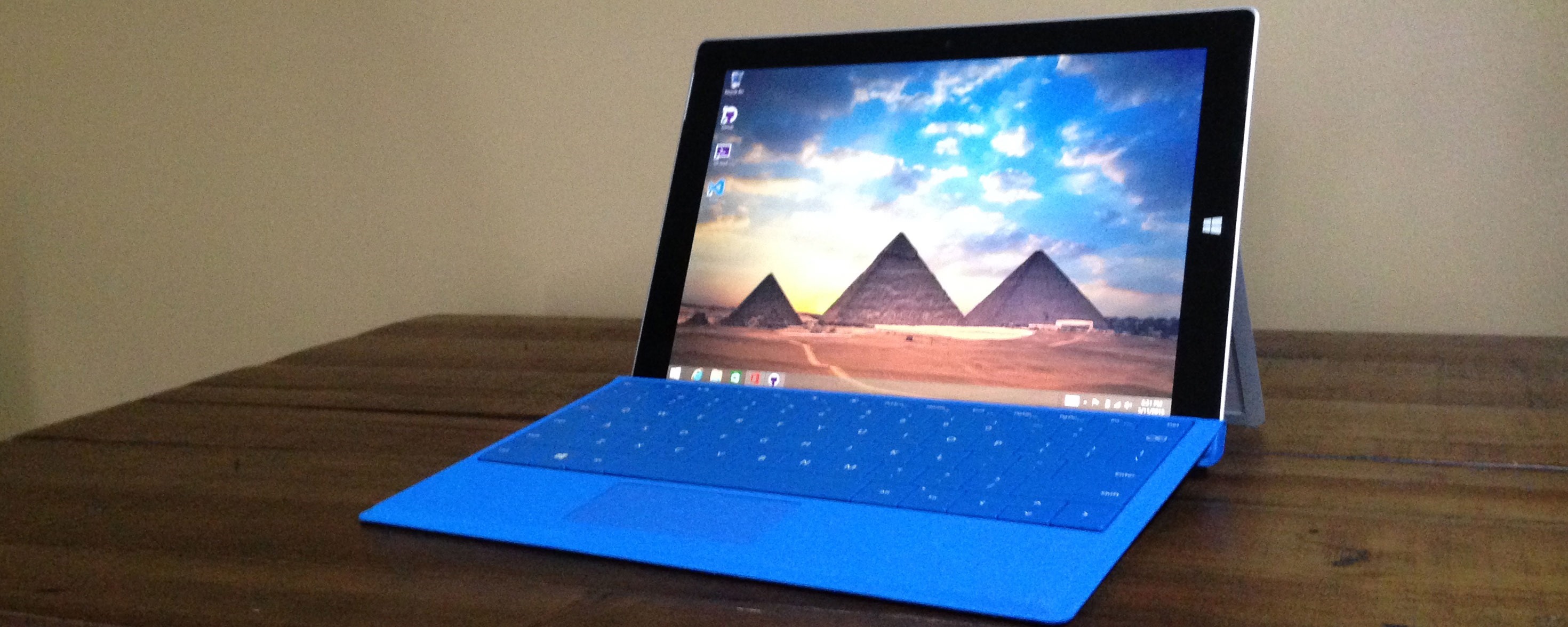My wonderful wife was kind enough to gift me the new Surface 3 along with blue Type Cover. I suppose for some this is yet more evidence that I am a Microsoft shill (I am looking at you Larry). I sincerely had no intentions of purchasing this device but overall I am really impressed with the build quality and versatility. I am, in fact, currently typing this post from my couch with the device comfortably positioned on my lap (I believe they call it lapability).
For the last two years I have not had a laptop/netbook for personal use, this was a deliberate move on my part, I have a terrible habit of working constantly from the couch, especially when I have sufficiently powerful devices. The Surface 3 represents an opportunity to use a device that closely resembles a netbook and a tablet, however, the modest specs will ensure that the amount development I do will have a natural throttle, forcing me into the office when I actually need to get things done.
My Surface 3 came with 4GB of RAM, 128GB hard drive (upgraded) and an Intel Atom x7 process at 1.6Ghz, these specs are more than enough for this device in tablet mode running Windows apps and for activities like browsing, listening to music and watching videos (or any combination of these activities). The device has a 10.8 inch screen running at full HD, however, I became immediately curious about how far I could push this as a semi-part-time developer PC so I installed the following items…
…and here is what I found.
Visual Studio Code
I talked about the VS Code a few week ago, and I can only assume this new addition to the Visual Studio family was made for lower spec devices like Surface 3. Visual Studio Code positively purrs on this device, it is evident that this application was significantly scaled back to ensure it meets the basic needs of every platform but this has also led to a yet ultra efficient application that is best described as snappy. While I have yet to install Code on my Dell Venue Pro tablet (it has half the RAM) I can imagine it would be just fine there also (although the screen would be too small).
Visual Studio 2013 Community Edition
The experience was not awful and that is about the most generous description I can give, I believe if you had anything less than 4GB of RAM (and the default Surface 3 does) this was be far too frustrating to be even vaguely useful. However I was able to open, build and subsequently debug a solution with 19 projects, and IIS Express with only modest delays in processing. I never intended to directly measure my experience (in seconds) but my gut tells me that in a pinch and with maybe a few less projects I could suffer doing lite development work with full blown Visual Studio. The processor is most certainly undermanned for Community edition, but opening a few projects, or just testing language features, this *could* work. I would stay away SQL server, code analysis basically anything that is unforgiving with RAM or disk I/O.
Another limitation to consider is that this is Window 8.1 (not pro) and so Hyper-V will not be available and consequently debugging into emulators (Windows or Windows Phone) will not be an option. If, for example, you do not have a phone to deploy your app to this option may be a non-starter.
Summary
I must say I really like my Surface 3, and with the introduction of Visual Studio Code there is a real opportunity to get stuff done for the student; the aspiring GitHub code committer; and the code newbie, while still being relatively kind to your bank account. Of course the Surface family does have a more capable Pro edition which features an i7 processor, but that is more than three times the cost, and not necessarily for everyone. There are of course plenty of other devices with 4GB of RAM but I cannot think of one that has this particular kind of size and flexibility.


Comments are closed.